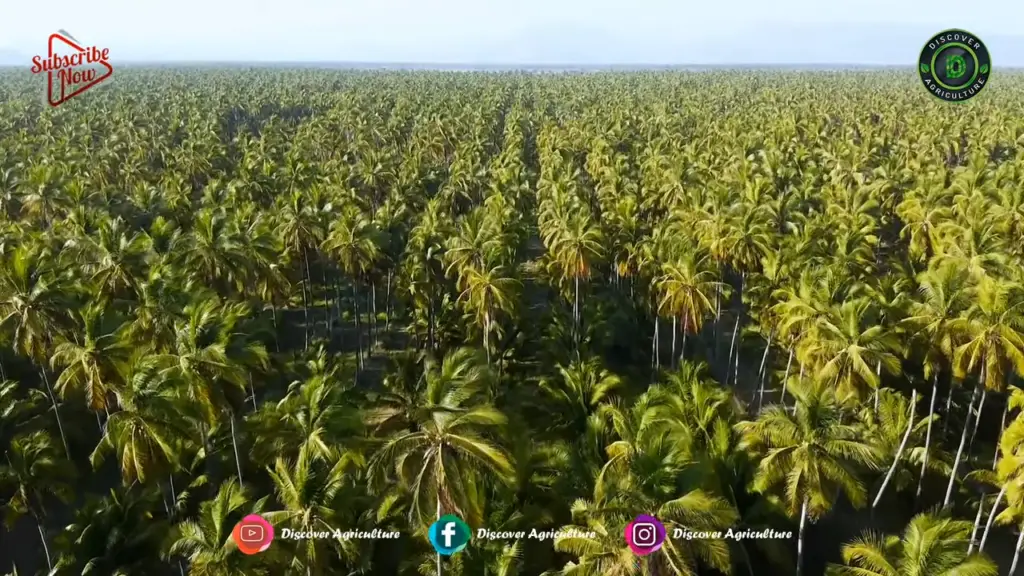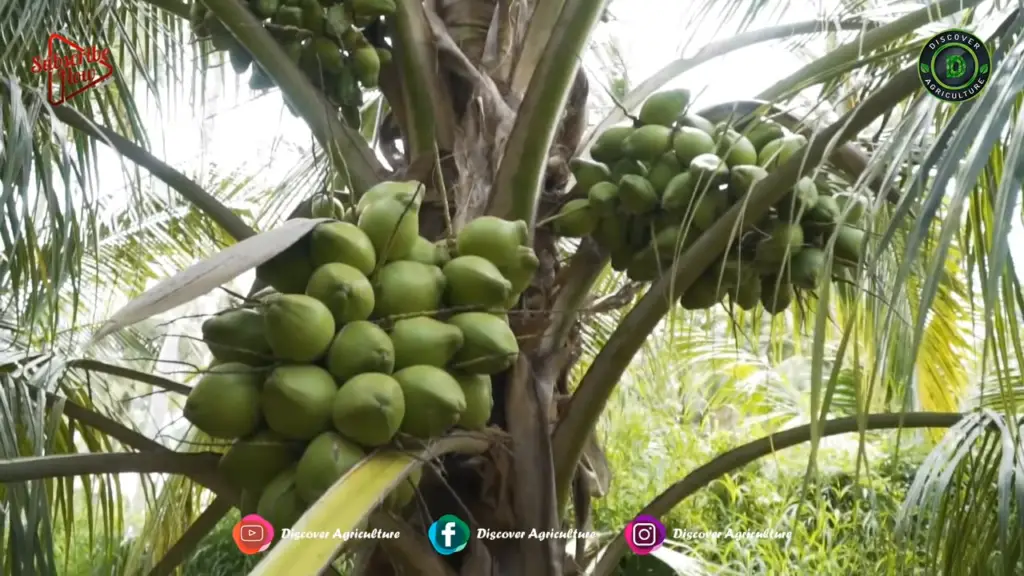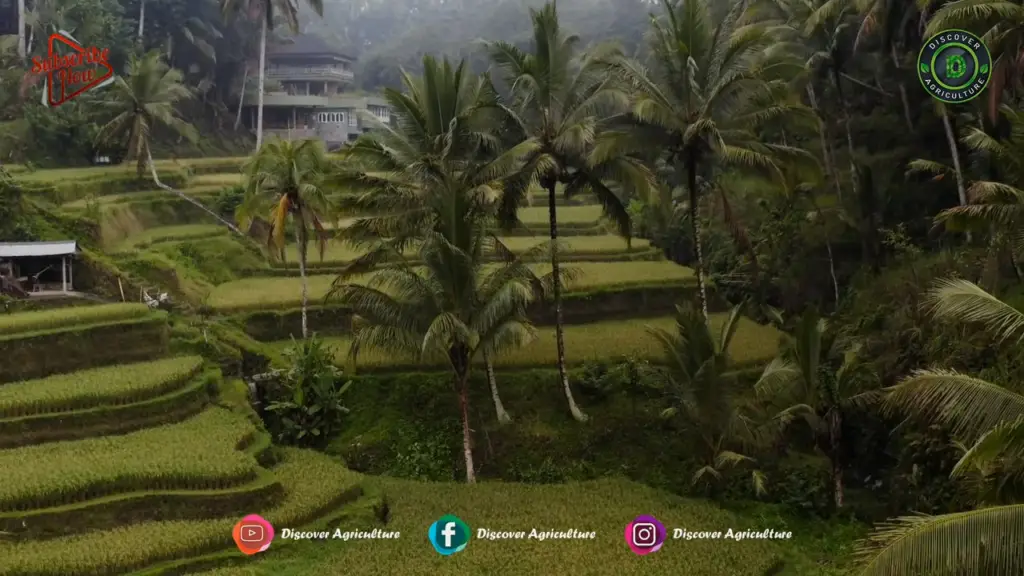30+ Different Types of Coconut Varieties
Coconut is a large palm plant variety that can grow up to 80 to 100 feet with a lean yet slender trunk. The tree is said to have originated in the southeastern parts of Asia. It is also famous as Kalpavriksha, which literally translates to the tree of heaven. As almost all the tree parts have some or other uses, the fruit itself has a plethora of uses in industries ranging from food to cosmetics. Let’s look at some of the best Coconut Varieties in the world.
Dwarf Coconut Varieties
Dwarf coconut palms are typically small in stature. They start producing fruit at a small age and size. Sometimes it only takes a few years for a dwarf variety to produce coconuts, at which point it may only be a meter or two tall. Even though dwarf coconuts can produce fruit when they are still a small size, some types can still grow to be quite tall.
1. Chowghat Orange Dwarf
This is an early flowering cultivar and takes about 3 to 4 years for initial flowering. The average annual yield is 63 nuts per palm per year. It is best suited for tender nut water. This cultivar was released by ICAR-CPCRI in 1991 for cultivation as a tender nut variety.
2. Kalpasree
Kalpasree has superior quality coconut oil, very sweet tender nut water, and meat and is resistant to root disease. This is the earliest flowering cultivar and takes about 2.5 to 3 years for flowering. It is tolerant of root disease. The mean annual yield is 90 nuts per palm with a copra content of 96.3g per nut. This variety is released for cultivation in root prevalent areas of Kerala.
3. Kalpa Jyothi
Dwarf variety with yellow fruits, a higher average yield of 114 nuts per palm per year with an estimated copra yield of over 16 kg per palm per year. Recommended for cultivation in Kerala and Karnataka for tender nut purposes.
4. Kalpa Surya
Dwarf with Orange fruits is recommended for cultivation in Kerala, Karnataka, and Tamil Nadu for tender nut purposes. The average yield is 123 nuts per palm per year with an estimated copra outturn of 23 kg per palm per year.
5. Kalpa Raksha
This is a semi-tall variety with sweet tender nut water and with higher resistance to root disease of coconut. It comes to flowering by 54 months from planting. Its annual yield is 87 nuts per palm, 16.38 kg copra/palm, and 10.65 kg oil per palm. In root disease-affected tracts, it gives an annual yield of 65 nuts per palm. The quantity of tender nut water is 290ml. This is released as a variety for tender nuts and for cultivation in the root prevalent areas of Kerala.
6. Malayan Yellow Dwarf
It originated in Malaysia and will grow up to 10 to 20 meters. It requires full sun and well-drained soil and it is a drought-tolerant variety. The Malayan yellow dwarf is one of the older varieties, originally cultivated in the late 1800s. It is fairly easy to grow and produces medium-sized yellow coconuts after just a few years of age. These days, the Malayan yellow dwarf coconut can be found in countries all over the world, especially Thailand, Brazil, and the Pacific Islands.
7. Golden Malayan Dwarf Coconut
It also originated in Malaysia It will grow up to 10-20 meters. This variety requires Full sun, well-drained soil, and a lot of water to survive. The golden Malayan dwarf coconut is the same as the yellow Malayan dwarf coconut in pretty much every way, except for the color. This variety produces dark orange coconuts instead of yellow, and they’re slightly larger, too.
8. Green Dwarf Coconut
This Malaysian variety can grow up to 10 meters. It requires full sun and well-drained soil. This is a drought-tolerant variety. The green dwarf is another type of Malayan dwarf coconut, and like the two previous types, it is fairly easy to grow. This variety produces green coconuts that don’t ever turn yellow or gold. The tree itself also doesn’t grow as tall as the other Malayan varieties, and the coconuts typically contain more water and less meat.
Watch this video on, How To Get More Yield From Coconut Tree

9. Macapuno Coconut
Macapuno coconut trees grow up to 5 meters. This originated in the Philippines. It requires full sun, well-drained soil, and medium moisture. The Macapuno coconut is a variety that was caused by a genetic mutation in the 1930s. The mutation causes the endosperm of the fruit to develop abnormally, which leads to the coconut having almost no water. Instead, the coconut has meat that is incredibly soft, juicy, and sweet, making it a perfect type of coconut to use in desserts and pastries. Ever since the mutation occurred, people have cultivated the Macapuno variety for its decadent coconuts.
10. Fiji Dwarf
This variety Originated in Fiji and it will grow up to 8 meters. These coconut trees require full sun, well-drained soil, and medium moisture. In the 1970s, tall coconut varieties in Florida and the Caribbean were victims of a deadly yellowing disease. In just a couple of decades, millions of coconut palms perished to the disease, so a replacement variety was in dire need. The Fiji dwarf coconut turned out to be resistant to the deadly pathogen, so it was subsequently planted all throughout Caribbean countries as well as Florida.
The Fiji dwarf coconut produces fruit at a young age and height, so coconuts are able to be harvested without the use of a ladder. In addition, this variety has many leaves compacted at the top, making it appear more vibrant and lush than other varieties.
11. King Coconut
This Sri Lankan variety can grow up to 10 meters. King coconut trees require Full sun, well-drained soil, and medium moisture. King coconuts are common along roads in Sri Lanka and southern India and are a common part of the diet for people in these countries. The coconuts themselves have an attractive shiny orange husk, and also contain more water than other varieties of coconut. The high sugar content in King coconuts makes them decadent and refreshing sources of hydration.
12. VHC1 Coconut
This Indian variety can grow up to 10 meters. The VHC1 coconut is a hybrid between the East Coast Tall and the Green dwarf coconut. It is famous for producing a massive amount of coconuts each year, up to 100 per tree!
Tall Coconut tree Varieties
Tall coconuts are varieties that don’t produce as early on as the dwarf varieties. As their name suggests, they grow to a larger size before producing coconuts, and some can reach incredible heights at maturity. In addition, tall coconut varieties typically live longer and are harder than dwarf varieties.
13. Chandra Kalpa
The average annual yield is 100 nuts per palm. The palm grows in all types of soil and it can withstand moisture stress. This cultivar is recommended for cultivation in the states of Kerala, Karnataka, Andhra Pradesh, and Maharashtra.
14. Kerachandra
The annual average yield is 110 nuts per palm. This is recommended for the west coast region including Kerala, Konkan, coastal Andhra Pradesh, and West Bengal.
15. Kalpa Dhenu
It commences flowering 67 months after planting in the field. This variety has the potential to produce 22,794 nuts per hectare per year. The quantity of tender nut water is 290 ml. This is recommended for cultivation in Kerala, the East Coast region of Tamil Nadu, Andhra Pradesh, and the Andaman & Nicobar Islands.
16. Kalpa Mitra
This variety has the potential to produce 80 nuts per palm per year. The quantity of tender nut water is 495 ml. This is recommended for cultivation in Kerala and West Bengal.
17. Kalpatharu
This variety is recommended for ball copra production. It yields around 116 nuts per palm per year with copra content of 176g, under rainfed situations. This is recommended for cultivation in Karnataka, Kerala, and Tamil Nadu.
18. Kera Keralam
The average annual yield under rainfed conditions is 80 nuts per palm. The fruits of the variety weigh about 800 to 900 g and copra content of 176 g per nut, with a copra oil content of 68%. Suitable for ball copra production. It is recommended for large-scale commercial cultivation in the states of Tamil Nadu, Kerala, and West Bengal.
19. Kalpa Haritha
A superior high-yielding tall selection with a lesser incidence of eriophyid mite infestation. The average nut yield is 118 nuts per palm per year under rainfed conditions with an estimated copra yield of 25.5 kg per palm per year. This variety is suitable for copra and tender nut purposes. Recommended for Kerala and Karnataka.
20. Kalpa Shatabti
The variety gives a high copra outturn of 28.65 kg per palm per year or 5.01 tonnes per hectare copra. The variety is characterized by large fruits with average copra content of 272.9 g and a higher volume of good quality tender nut water and giving an average net yield of 105 nuts per palm per year. Recommended for cultivation in the coconut growing tracts of Kerala, Karnataka, and Tamil Nadu.
21. Kalpa Ratna
A high-yielding variety is suitable for tender nut, copra, and inflorescence sap production. The annual average nut yield is 133 nuts per palm per year, with a copra outturn of 24.47 kg per palm per year. Recommended for Kerala, Tamil Nadu
22. East Coast Tall Coconut Tree
It will grow up to 30 meters in height. It requires full sun, well-drained soil, and medium moisture. The east coast tall coconut is one of the more common types of cultivated coconuts. It is typically very hardy as long as the soil isn’t too wet. These tall palms begin producing coconuts after 6 or 8 years and can produce 60 to 70 coconuts per year.

23. West Coast Tall Coconut
This variety can grow up to 33 meters. West coast tall variety requires full sun and well-drained soil. it is a drought-tolerant variety. The west coast tall coconut is one of the tallest varieties of coconut palm. It is slightly taller than the east coast tall variety and produces slightly more coconuts per year as well. In addition, the coconuts of the west coast tall coconut have a slightly higher oil content than most other types.
24. Jamaican Tall
This Jamaican variety can grow up to 33 meters in height. It requires full sun, well-drained soil, and medium to high moisture. The Jamaican tall is a beautiful, fast-growing, coconut palm that can live up to 80 years old. Its canopy is dense and globose, forming a round cluster of huge, dark green leaves. The trunk of the Jamaican tall is usually swollen at the base and is quite distinct. It also produces coconuts prolifically up to 200 per year.
25. Panama Tall
This variety can grow up to 30 meters. Panama’s tall variety requires Full sun, well-drained soil, and medium moisture. The Panama tall, also called Pacific tall, is famous for its hardiness. The palm is especially resistant to wind, and it is the most cold-resistant coconut palm there is.
The Panama tall is a perfect choice for people in places with frequent storms, or in the subtropics where temperatures often drop below 60 or 70 degrees F. Its appearance is very similar to the Jamaican tall, but the Panama tall tends to have a more umbrella-shaped canopy rather than a round one.
26. Maypan Coconut
This Jamaican variety can grow up to 20 meters and it requires Full sun, well-drained soil, and medium moisture. The Maypan coconut is another hybrid coconut that was cultivated in response to a lethal yellowing disease. The disease threatened to wipe out coconuts throughout the Caribbean, but like the Fiji dwarf, the Maypan coconut showed a resistance to the disease. This hybrid is a mix between Malayan dwarf and Panama Tall coconuts. It boasts the hardiness of the Malayan dwarf and the weather resistance of the Panama Tall.
27. Tiptur Tall
This Indian variety requires Full sun, well-drained soil, and medium moisture. The Tiptur tall coconut palm is one of the easiest to grow, requiring almost no maintenance once planted. It produces 70 to 80 coconuts per year and pushes out a reliable crop year after year.
Hybrids Coconut varieties:
Let’s list some of the Hybrid coconut also known as Dwarf coconut varieties.
28. Chandra Sankara
It is a cross between COD with WCT. The palms come to bearing early when compared to tall palms. It is a heavy yielder and produces 116 nuts per palm with a range of 100 to 150 nuts. The copra content in the nut is 160 to 230 g. It is susceptible to drought and hence irrigation is required during the summer months. Chandrasankara was released by ICAR-CPCRI in 1985 for cultivation in Kerala and Karnataka.
29. Chandra Laksha
It is a hybrid between LCT and COD. The hybrid palm comes to bear in about 4 to 5 years after planting. The annual yield is 109 nuts per palm with a copra content of 150 to 210g per nut.
30. Kera Sankara
It is a hybrid between WCT and COD. The palm comes to bearing by the fourth year of planting. The mean annual yield of nuts is 108 with a range of 70 to 130 nuts. The copra content is 187g per nut. This hybrid was released by ICAR-CPCRI in 1991, for large-scale cultivation in Kerala, coastal Andhra Pradesh, and coastal Maharashtra.
31. Kalpa Samrudhi
It is a hybrid between MYD and WCT. The mean annual yield is 117 nuts per palm. The copra yield is 4.38 tonnes per hectare and the oil is 3.04 tonnes per hectare. The hybrid is suitable for tender nut purposes. This hybrid was recommended for cultivation in Kerala and Assam.
32. Kalpa Sankara
It is a hybrid between root disease-free Chowghat Green Dwarf and root disease-free West Coast Tall. The mean annual yield is 85 nuts per palm. The copra yield is 2.5 tonnes per hectare and the oil is 1.69 tonnes per hectare. This hybrid was recommended for cultivation in root disease prevalent tracts of Kerala.
33. Kalpa Sreshta
It is a high-yielding, hybrid involving MYD and TPT. The mean yield is 167 nuts per palm per year, with an estimated high copra outturn of 35.9 kg per palm per year or 6.28 tonnes per hectare copra. The hybrid is suitable for tender nut purposes. This hybrid is recommended for cultivation in Kerala and Karnataka States.

There you have it, 33 different types of coconuts. These are the best varieties and there are so many varieties of coconuts. Each one would have something particular to bring to the table. Coconuts are an awesome superfood, whether you. like to eat coconut meat, drink coconut water, or use the oil to cook. Now you can try to taste the differences between all the different types of coconuts.
Also View: HOW TO GROW COCONUT TREE FROM SEED
DOWNLOAD PDF: 30+ Different Types of Coconuts That Grow Around the World




Excellent info, could you also guide/provide where to buy the seeds/saplings?